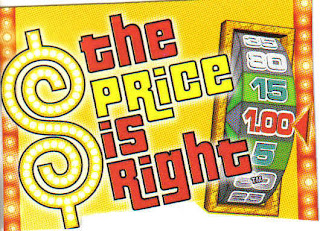Throughout the semester, I covered a variety of topics in the class (as a reminder, the class was designed for non-mathematics majors to take as an elective to fulfill distribution requirements). The topics that covered included (but are not limited to):
- Chuck-a-Luck
- Roulette
- Craps
- Keno
- Five Card Stud
- Texas Holdem
- Lotteries
- Instant Insanity
It is the final topic that shall be the focus of today's entry.
For a few semesters now, I've lobbied my mathematics department to allow me to teach an experimental course. For the longest time, I wanted to do a 300-level Introduction to Graph Theory course. Alas, our mathematics major is quite small (and most of our majors aim to teach at secondary schools so their electives get filled by education required classes like geometry). As such, it has been deemed unlikely that I could ever get enough students to adequately fill up a Graph Theory course.
Last spring, I changed gears and proposed the Mathematics of Games and Gambling course instead. As you can guess, that was approved (and has, for the record, been approved for the upcoming spring semester as well). Although I couldn't teach graph theory, I still managed to find a way to squeeze in a few days of graph theory (at a basic level) by using the 1980s puzzle "Instant Insanity."
Before I describe how I taught the lesson, I will say that overall the lesson went extremely well. I even put a question on the final exam which almost every student got correct! If you have taught a lesson using Instant Insanity (or something similar), I'd love to hear about it. If you happen to be inspired in some way to use what I did in your own classroom, I'd love to hear about your experiences when they happen!
Our class periods are just over an hour long, so for the first class of the unit I showed the students the original Instant Insanity advertisement after a short PowerPoint presentation that covered the various graph vocabulary that I wanted the students to know.
The terms weren't difficult, but they weren't all simplistic either (bipartite graphs).
The next class was much more of a riot (for me anyhow). I gave each student a colored sheet Instant Insanity puzzle blocks which they had to cut-out and tape together. Watching college students do something that many haven't done since a middle-school art class was definitely amusing (and somehow a bit worrisome too)!
After constructing the blocks, the students spent the remaining time trying to solve the puzzle. While a few did succeed, the majority of the class did not successfully complete the confounding game. I didn't provide any hints as they left class that day, though I did encourage them to find a "mathematical way to solve the puzzle."
The final day of the lesson was the big one - how to solve Instant Insanity puzzles using graph theory. To begin, we discussed how each block could be "unfolded" to a two dimensional image.
From there, we can easily pair the opposite sides.
Once the three pairs are made (front/back, top/bottom, left/right), all you need is a graph with four vertices (one for each of the four possible colors). Draw an edge that for each of the three pairings. For example, if the top color is blue and the bottom color is red, there should be an edge connecting the blue vertex to the red one. If the left and right colors both happen to be yellow, there would be a loop connecting yellow to itself. In total, there should be three edges for each graph (one graph per each of the four cubes).
Using the four graphs (or if you prefer, a single graph that combines the four small graphs), you then look for a path that uses an edge from each cube once and that makes each of the four vertices have degree two. Once you find one such solution, find a second solution. The first solution corresponds to the front and back of the four cubes. The second solution corresponds to the left and right. Note: Once you've found the front/back and left/right, the top/bottom is forced (and therefore you do not need to worry yourself about those)!
I've skipped over a few of the finer details, but in essence that's how you solve an Instant Insanity puzzle. For those who want to give it a go, here are three puzzles. It should be noted that some puzzles may not be solvable.
Good luck!






















